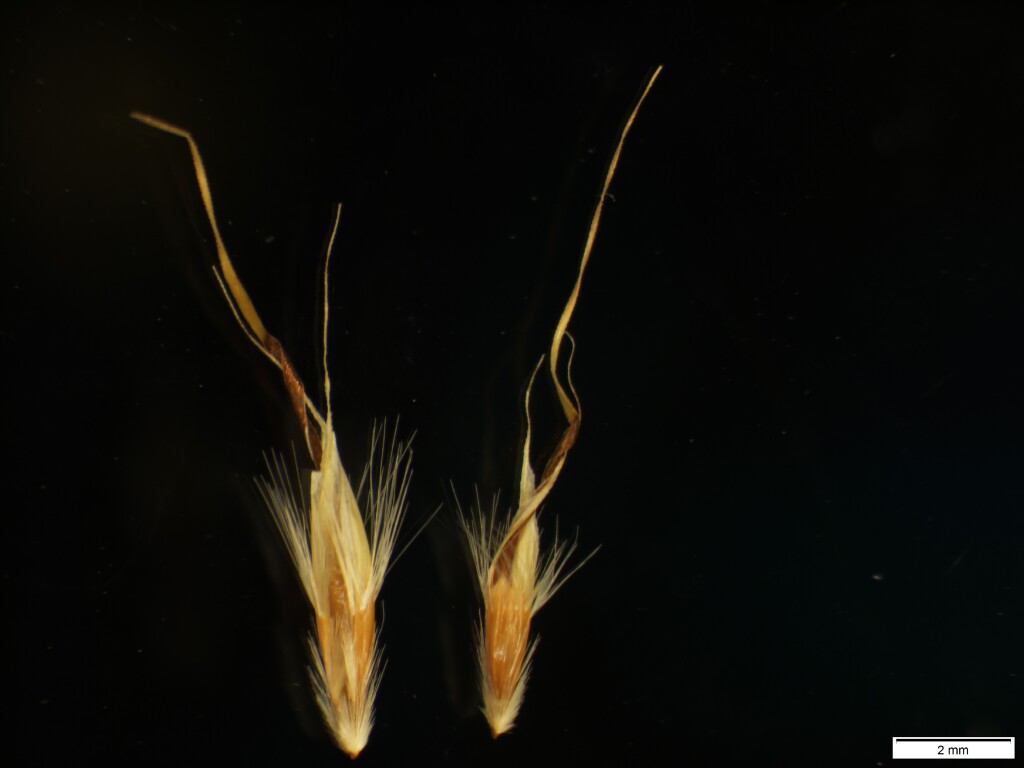Rytidosperma duttonianum
(Cashmore) Connor & Edgar Brown-back Wallaby-grassRather robust tufted perennial. Culms to 80 cm high. Leaves glabrous; blade flat or channelled, to 25 cm long and usually 2–3.5 mm wide. Panicle ovate and compact or commonly with the lower branches 2–6 cm long and spreading or reflexed at anthesis. Spikelets hardly purplish, 3–8-flowered; glumes subequal, acute to acuminate but often narrowly truncate, 12–20 mm long; lemma rather broad 2.5–4 mm long, with 2 rows of hairs, the lower c. 1 mm above the callus tuft, the smooth, shining surface clearly visible between the rows and golden brown at maturity; lateral lobes erect, 5–9 mm long, rather abruptly tapered to the setae which are usually about as long as the flat part, often twining around the 10–15 mm long central awn at maturity; palea obovate, firm, conspicuously exceeding sinus (by 1.5–2.5 mm). Flowers Sep.–Dec.
LoM, MuM, Wim, GleP, VVP, VRiv, RobP, MuF, GipP, OtP, WaP, Gold, CVU, GGr, DunT, NIS, HSF, HNF. Also SA, NSW, ACT. Usually occurring in lowland sites prone to inundation, chiefly on heavier soils and particularly in the now much-reduced grasslands of the basalt plains.
Walsh, N.G. (1994). Poaceae. In: Walsh, N.G.; Entwisle, T.J., Flora of Victoria Vol. 2, Ferns and Allied Plants, Conifers and Monocotyledons, pp. 356–627. Inkata Press, Melbourne.
 Spinning
Spinning

